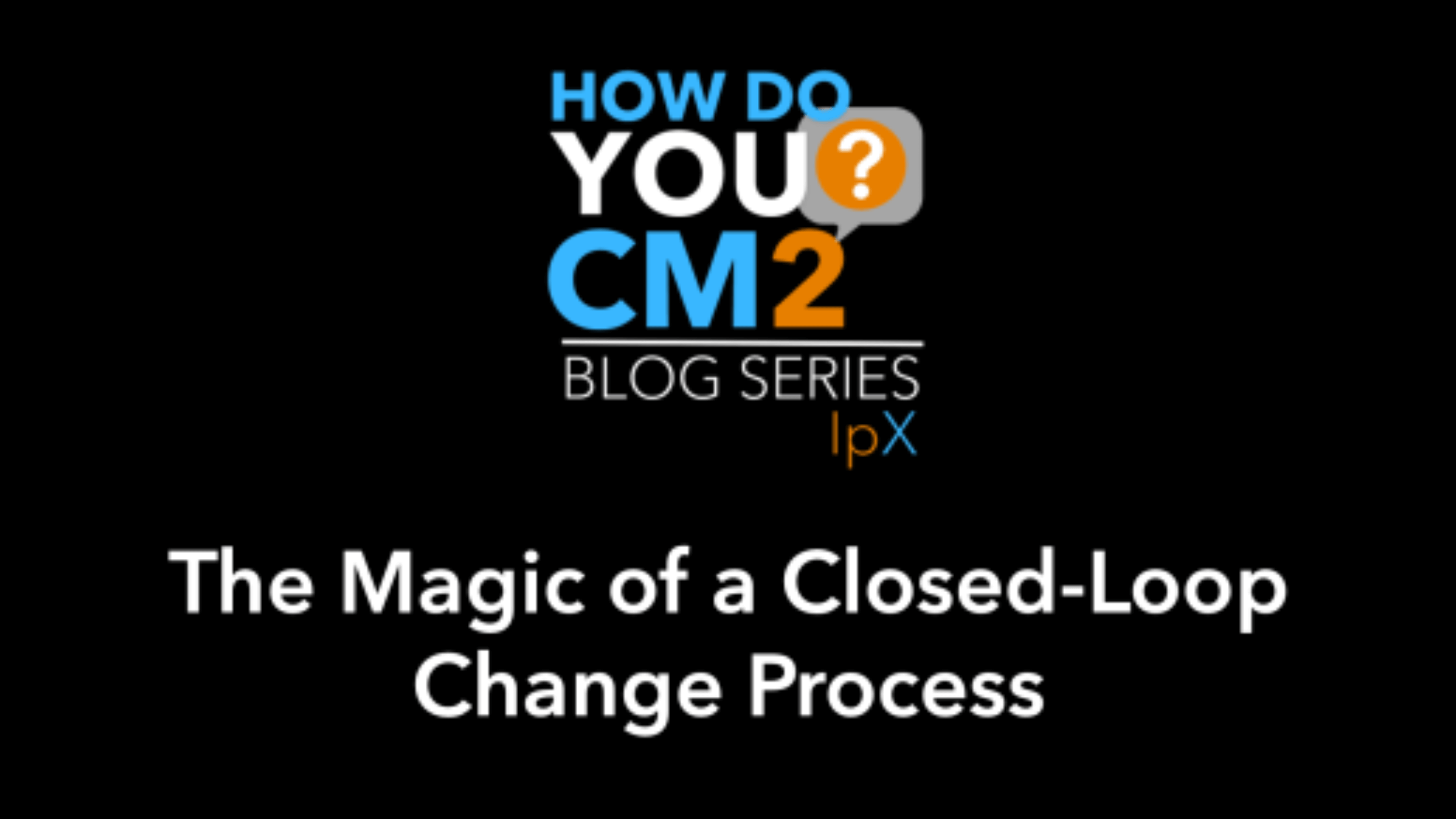July 22, 2025
Community Voice


Hey everyone, building on our last post about how CM2 isn’t just for engineers. Today, I want to share one of the biggest game-changers I’ve seen in making that appearingly magical cross-functional collaboration happen: it’s all about having an 𝗲𝗻𝘁𝗲𝗿𝗽𝗿𝗶𝘀𝗲 𝗰𝗹𝗼𝘀𝗲𝗱-𝗹𝗼𝗼𝗽 𝗰𝗵𝗮𝗻𝗴𝗲 𝗽𝗿𝗼𝗰𝗲𝘀𝘀.
And no, that’s not just a fancy term. This is the beating heart of the CM2 framework. Think of it this way: For proper Configuration Management knowing what you have is not enough, it also requires knowing how ‘what you have’ changes – from the very first idea, all the way through to its final retirement.
I’ve seen many organizations wrestling with messy, fragmented change management. A new requirement pops up, engineering jumps on it, but does finance even know about the cost implications? Did procurement order the right new parts? Is customer service prepped for the update? So often, these connections are manual, stuck in their own little silos, and just screaming for mistakes to happen. Leading to endless delays, tons of rework, and sometimes even tricky compliance nightmares.
So, what does a good closed-loop change process, backed by CM2, do for you? It makes sure of a few key things:
Watching this unfold in companies, where teams go from constantly fighting fires to executing in perfect sync and doubling the amount of changes they process. It empowers your whole organization to innovate super fast while keeping control and clarity. Think of it as shifting from reaction mode to orchestration—CM2 gives you the tools to design change, not just survive it.
So, for this round of “How do YOU CM2?”, I’m curious:
Have you tried implementing a closed-loop change process? What were your biggest wins, or even the biggest headaches, getting everyone on board and connected?
Let’s keep building a more robust future for Enterprise CM together!
Use code Martijn10 for 10% off training—and don’t forget to tell them Martijn sent you 😉.
Copyrights by the Institute for Process Excellence
This article was originally published on ipxhq.com & mdux.net.

Known by his blog moniker MDUX—Martijn is a leading voice in enterprise configuration management and product lifecycle strategy. With over two decades of experience, he blends technical depth with practical insight, championing CM2 principles to drive operational excellence across industries. Through his blog MDUX:The Future of CM, his newsletter, and contributions to platforms like IpX, Martijn has cultivated a vibrant community of professionals by demystifying complex topics like baselines, scalability, and traceability. His writing is known for its clarity, relevance, and ability to spark meaningful dialogue around the evolving role of configuration management in Industry 4.0.

